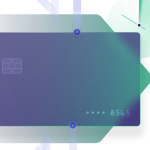Blockchain, the technology that underpins Bitcoin and other cryptocurrencies, is finding its way into the insurance industry enabling everything from verifying claims to preventing fraud.
While the industry was slower than others to embrace digital processes, InsureTech is now booming, with blockchain playing a central role in automating processes that were long done manually.
Take verifying and authenticating claims. It’s a big part of what insurance companies do. Many rely on old systems, paper-based records, and legacy databases. Approving a claim takes days if not weeks and mistakes can happen.
But thanks to blockchain the entire workload is automated, speeding up the time it takes to approve a claim and eliminating the chance of human error. Not to mention insurance companies can save money by creating a blockchain based ledger and contracts.
That’s the aim of State Farm and USAA, the two insurers that announced in late May the launch of a joint subrogation solution that uses real claims data to test how blockchain tech can improve the speed of processing auto claims. Subrogation is the last phase of an insurance claim process. It’s when one insurance company pays out the claim to another insurer.
“Today, subrogation is a relatively manual, time-consuming process often requiring physical checks to be mailed on a claim-by-claim basis between insurers,” says Mike Fields, Innovation Executive, State Farm when announcing the joint product. “In 2018 alone, the total amount of dollars demanded and issued through the subrogation process was over $9.6 billion for all insurance carriers. You can imagine the time and resources required to complete these transactions.”
Blockchain can also help insurance companies fight fraud, a phenomenon that costs the industry billions of dollars a year. Insurance fraud comes in many flavors but the main culprit is the inability of databases within the insurance industry to work together. Not to mention the reams of paperwork associated with claims makes it easier to work the system. With blockchain, these disparate databases could talk to each other, enabling insurance companies to quickly spot any fraud. It’s virtually impossible for someone to file more than one claim since it's all stored on a distributed ledger.
In late April Marsh, the insurance broker and risk adviser announced it's rolling out its Proof of Insurance Blockchain platform to business customers in the U.S. In its initial phase, customers will get access to a self-service digital app that will enable them to search, view, issue and reissue certificates of insurance on demand. Marsh will add more functions to the platform throughout 2019.
Blockchain technology’s mark on insurance won’t end with automation and fraud prevention. It's expected to play a big role in life insurance, property title searches and in reinsurance. All of those areas have stringent underwriting and manual processes that take days and weeks to complete. The insurance industry recognizes that and the power of blockchain, which means more advances to come.
























